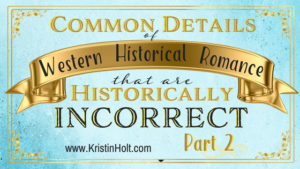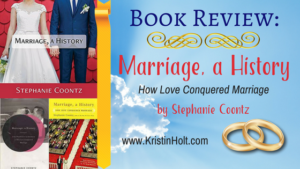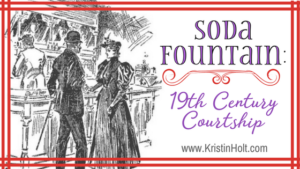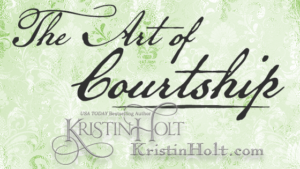Common Details of Western Historical Romance that are Historically INCORRECT, Part 1
.
Common Details of Western Historical Romance that are Historically INCORRECT, Part 1
.
So many times, I’ve read Western Historical Romances containing elements of romance, dating, and interaction between the hero and heroine (or between characters in general) that are in stark disagreement with historical fact. Just last month I began reading a novella, and in the opening scene, somewhere in the 1870s (?) the heroine reflects on the many months the hero and she have been dating.
A-okay if the book had been a contemporary romance.
Like fingernails on a chalkboard to me, because I’d noticed several times the comments by credible historians that nobody dated in the 19th century.
No one dated?
That’s right. No one dated.
.

.
In context of (fiction) Western Historical Romances: Old West, United States, set virtually anywhere in the States or the Territories from 1850 to 1900 ~
.
INCORRECT MYTH:
MYTH A: “May I call on you?”
MYTH B: “He asked me on a date.”
.
TRUTHS:
Inappropriate for a man to take the initiative in calling
.
… [Calling] took place at the girl’s home (when she was still young enough to be called a “girl”), which therefore made it inappropriate for a man to take the initiative in calling. A man could show a girl that he liked her, but it was the girl’s “privilege” to ask a man to call. The middle-class practice of calling on a woman gave the parents and the woman herself control over the courtship process, and this control was not contested.
.
~ Ping PDF: Why Love Hurts, A Sociological Explanation by Eva Illouz
emphasis added
.
![]()
.
Beaus paid a call upon ladies at home
.
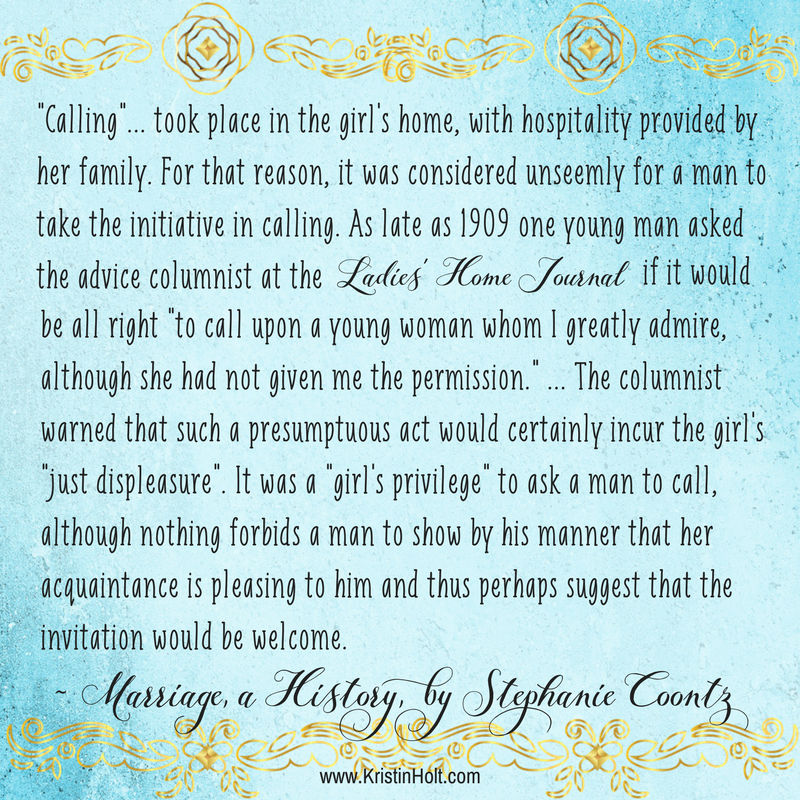
.
The full quotation, as found in Marriage, a History, by Stephanie Coontz:
.

Three paragraphs from MARRIAGE, A HISTORY by Stephanie Coontz, wherein the historian explains the accurate nature of “calling” upon a young woman in her home, and why society’s expectations dictated that it was unseemly for a man to take the initiative in calling. Instead, it was the “girl’s privilege” to ask a man to call. (Content courtesy of Google)
.
![]()
.
Before 1910s, “dating” was associated with prostitution
.
… Before long, Victorian culture would prevail, and if one term characterized courtship of the 19th century, it would be “calling.” When permitted, gentlemen would call upon young ladies, and it was this custom of calling that eventually segued into “dating.” The transition was not, however, a subtle one. Prior to the 1910s, “dating” was a word associated with prostitution. But the Victorian Era was over, and socializing was undergoing a revolution. The shift was profound, in that calling was all about meeting with one’s future spouse in a proper domestic (or church-sponsored) setting, and dating was all about having fun in public venues with someone of the opposite sex. In other words, tea in the parlor and church picnics were losing out to amusement parks and dances. By the 1920s, courtship was synonymous with dating…
.
~ Oxford Dictionaries: The Language of Courtship
emphasis added
.
.
“Public Courtship” took hold (1890s)
This ‘prelude to dating’ belonged in cities, with young ladies far away from home… NOT in the West.
.
The story of dating began when women left their homes and the homes of others where they had toiled as slaves and maids and moved into cities where they took jobs that let them mix with men. Previously, there had been no way for young people to meet unsupervised, and anyone you did run into in your village was likely to be someone you already knew.
.
Think what a big deal it is when one new single [man] shows up in a Jane Austen novel. Then think how many men a salesgirl who worked at Lord & Taylor in the 1910s would meet every day. You start to appreciate the sense of romantic possibility that going to work in the big cities inspired.
.
~ Labor of Love: The Invention of Dating by Moira Weigel, hardcover edition, p 7
emphasis added
.
![]()
.
As with concepts like the “teenager” and “middle-class,” dating is an historically recent invention, spurred by an influx of women into the big cities seeking work around the turn of the 20th Century.
.
The word “date” was coined– inadvertently, it seems– by George Ade, a columnist for the Chicago Record, in 1896. In a column about “working class lives,” he told of a clerk named Artie whose girlfriend was losing interest in him and beginning to see other men socially. When Artie confronts his fading love, he says, “I s’pose the other boy’s fillin’ all my dates?”
.
But when these single women, stripped from their dependency on fathers and husbands, began to be courted in public, police, politicians, and civic leaders were alarmed.
.
“In the eyes of the authorities,” Weigel writes, “women who let men buy them food and drinks or gifts and entrance tickets looked like whores, and making a date seemed the same as turning a trick.”
.
~ Labor of Love: The Invention of Dating, by Moira Weigel
emphasis added
.

.
Etiquette (& subtle communication) In Calling
Middle- and upper-class young ladies (in Eastern cities) received callers; they did not date
.

How a gentleman should gracefully discontinue calling upon a lady. The Waterloo Courier of Waterloo, Iowa on March 24, 1880.
.

.
I’ll admit it; I’m guilty of this Common Details of Western Historical Romance that are Historically Incorrect. I’ve read so many books where the hero asks the heroine to dine out with him, and they walk together to the restaurant in the Old West town (leaving her parents at home), and they sit down and order a meal together, that I included this same old myth in my own books. As recently as Sophia’s Leap-Year Courtship, I wrote my hero asking the heroine to go with him to the theater to enjoy a play. Granted, she’s a mature woman… but I didn’t include a justification as to why they broke society’s strict rules. I’ve also written “dating” (hopefully without calling their courtship “dating”) in other, earlier titles. Oops. How embarrassing.
Have you noticed 20th Century-style dating in Old West books? Whether the author called it “dating”, or the behavior (“Let’s go out for a Coke.”), did the faux pas feel like an error to you? Will the awareness of this historical accuracy change anything for your reading, going forward?
Please scroll down and comment. We’d love to hear your thoughts on the topic.
.

.
As the title of this article implies, this is part 1 of a many-part blog article series. I’ll soon post #2 in this ongoing series about Common Details of Western Historical Romance that are Historically Incorrect. Watch for this blog series!
.
Referenced Titles for Sale
.
.

.
Related Articles
.
.

Updated June 2022
Copyright © 2018 Kristin Holt LC





